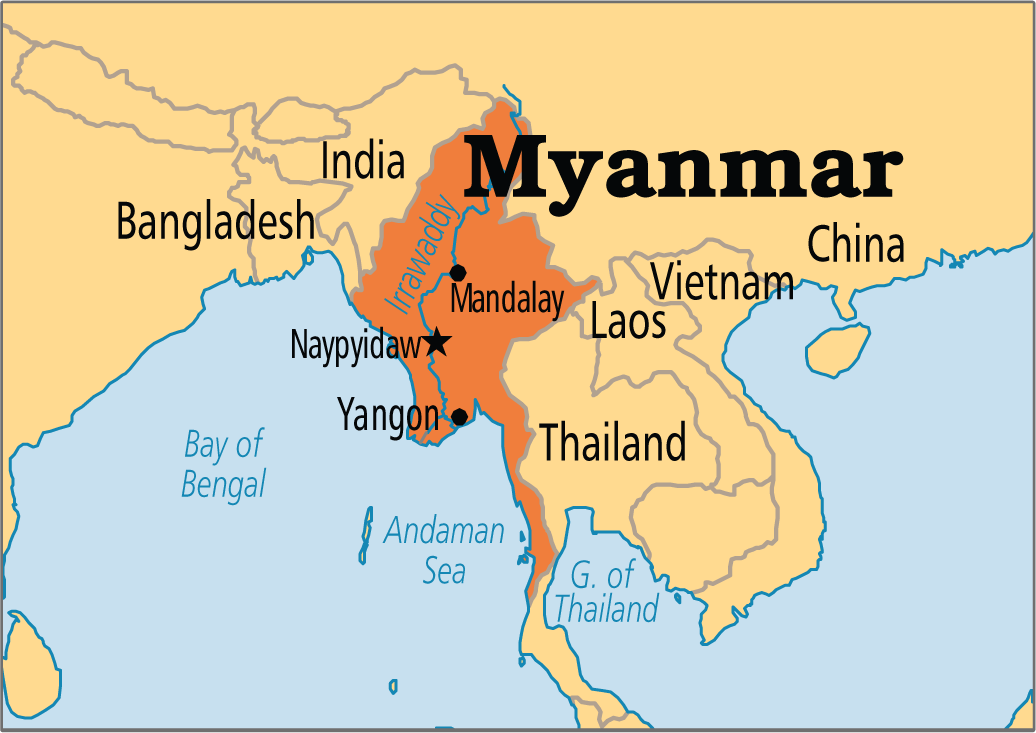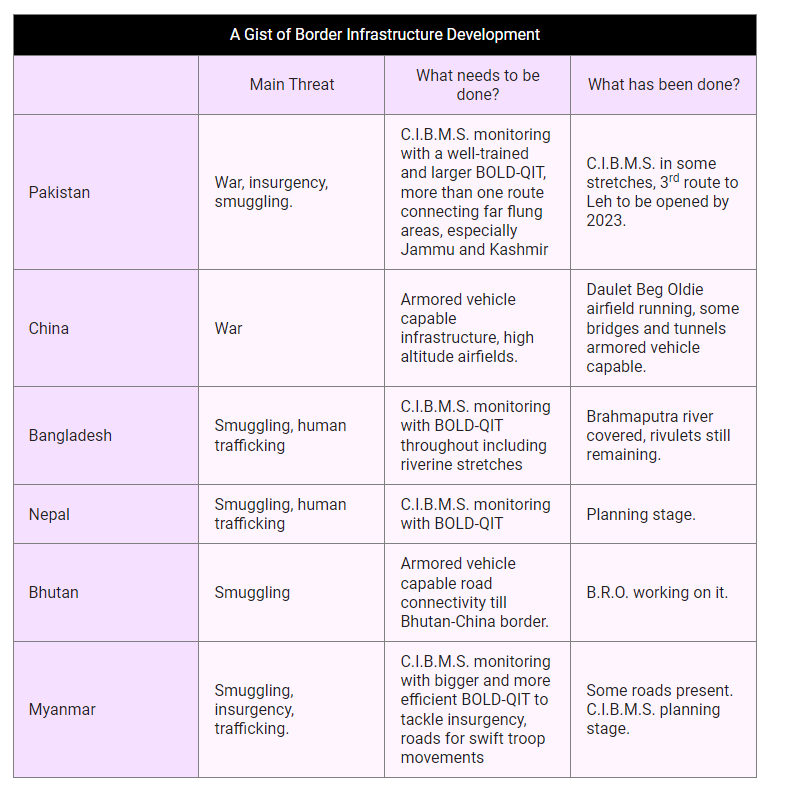Internal Security
Smart Fencing System Along India-Myanmar Border
- 16 Oct 2023
- 7 min read
For Prelims: Smart Fencing System, India-Myanmar Border
For Mains: Infrastructure, Border Surveillance and Control, Security Challenges and their Management in Border Areas
Why in News?
The Ministry of Home Affairs (MHA), in its 2022-23 annual report, has introduced a plan to build a 100-kilometer Smart Fencing System (SFS) along the India-Myanmar border.
What is a Smart Fencing System?
- About:
- An SFS is a technologically advanced border security infrastructure designed to enhance surveillance and control along sensitive border areas.
- It typically includes a combination of physical barriers, sensors, cameras, and communication systems.
- The term "smart" refers to the system's ability to use technology for monitoring and responding to border threats effectively.
- Need for SFS along the India-Myanmar Border:
- Ethnic Violence and Insurgency:
- Ethnic violence has been a significant concern in Manipur, resulting in the tragic loss of over 175 lives since May 3, 2022. Manipur has witnessed as many as 137 insurgency-related incidents out of the total 201 recorded in the northeastern states in 2022.
- Manipur is affected by the activities of Meitei, Naga, Kuki, Zomi, Hmar insurgent groups.
- The presence of an unfenced border and unregulated migration from Myanmar have been attributed as some of the factors responsible for the ethnic violence in Manipur.
- This has resulted in violence, extortion and diverse demands by various Indian Insurgent Groups (IIGs) which maintain safe havens/camps in neighbouring countries.
- The smart fencing system will deter unauthorized entry and infiltration by insurgents and illegal actors, addressing a pressing security issue.
- Enhancing Surveillance:
- A smart fencing system is equipped with advanced surveillance technologies to monitor and respond to border breaches in real time.
- Tackling Complex Security Challenges:
- The northeastern region faces a fragile security situation due to factors such as terrain, socio-economic development, tribal rivalries, and migration.
- The smart fencing system is a proactive measure to mitigate these threats and maintain peace and stability in the region.
- The northeastern region faces a fragile security situation due to factors such as terrain, socio-economic development, tribal rivalries, and migration.
- Ethnic Violence and Insurgency:
What are the Key Points Regarding the India-Myanmar Border?
- India shares a long land border of over 1643 km with Myanmar as well as a maritime boundary in the Bay of Bengal. Four northeastern states, viz. Arunachal Pradesh (520 km), Nagaland (215 km), Manipur (398 km) and Mizoram (510 km).
- Out of 1,643 km, a demarcation of 1,472 km has been completed as per the MHA’s 2022-23 annual report.
- Myanmar is the only ASEAN country adjoining India and, therefore, is a gateway to SouthEast Asia.
- The border is porous and unfenced in many parts, allowing free movement of people and goods under a bilateral agreement. The border also witnesses illegal activities and is also affected by the activities of various insurgent groups that operate in the region and often take shelter in Myanmar.
- A Free Movement Regime (FMR) exists between India and Myanmar. “Under the FMR, every member of the hill tribes, who is either a citizen of India or a citizen of Myanmar and who is resident of any area within 16 km on either side of the Indo-Myanmar border can cross the border on the production of a border pass (one-year validity) issued by the competent authority and can stay up to two weeks per visit.”
- The Manipur government has suspended the FMR since 2020, post-Covid-19 pandemic.
- A Free Movement Regime (FMR) exists between India and Myanmar. “Under the FMR, every member of the hill tribes, who is either a citizen of India or a citizen of Myanmar and who is resident of any area within 16 km on either side of the Indo-Myanmar border can cross the border on the production of a border pass (one-year validity) issued by the competent authority and can stay up to two weeks per visit.”
What are the Other Smart Fencing Projects in India?
- India’s first ‘smart fence’ pilot project was launched along the India-Pakistan border in 2018.
- Later the project BOLD-QIT (Border Electronically Dominated QRT Interception Technique) was launched under the Comprehensive Integrated Border Management System (CIBMS) on the Indo- Bangladesh border in 2019.
- Two pilot projects covering about 71 Kms on Indo-Pakistan Border (10 Kms) and Indo-Bangladesh Border (61 Kms) of CIBMS have been completed.
- CIBMS involves deployment of a range of state-of-the-art surveillance technologies — thermal imagers, infra-red and laser-based intruder alarms, aerostats for aerial surveillance, unattended ground sensors that can help detect intrusion bids, radars, sonar systems to secure riverine borders, fiber-optic sensors and a command and control system that shall receive data from all surveillance devices in real time.
UPSC Civil Services Examination Previous Year Question (PYQ)
Prelims
Q. Department of Border Management is a Department of which one of the following Union Ministries? (2008)
(a) Ministry of Defence
(b) Ministry of Home Affairs
(c) Ministry of Shipping, Road Transport and Highways
(d) Ministry of Environment and Forests
Ans: (b)
Mains
Q1: Analyze the multidimensional challenges posed by external state and non-state actors, to the internal security of India. Also discuss measures required to be taken to combat these threats. (2021)
Q2: Analyze internal security threats and transborder crimes along Myanmar, Bangladesh and Pakistan borders including Line of Control (LoC). Also discuss the role played by various security forces in this regard. (2020)
Q3: Border management is a complex task due to difficult terrain and hostile relations with some countries. Elucidate the challenges and strategies for effective border management. (2016)






